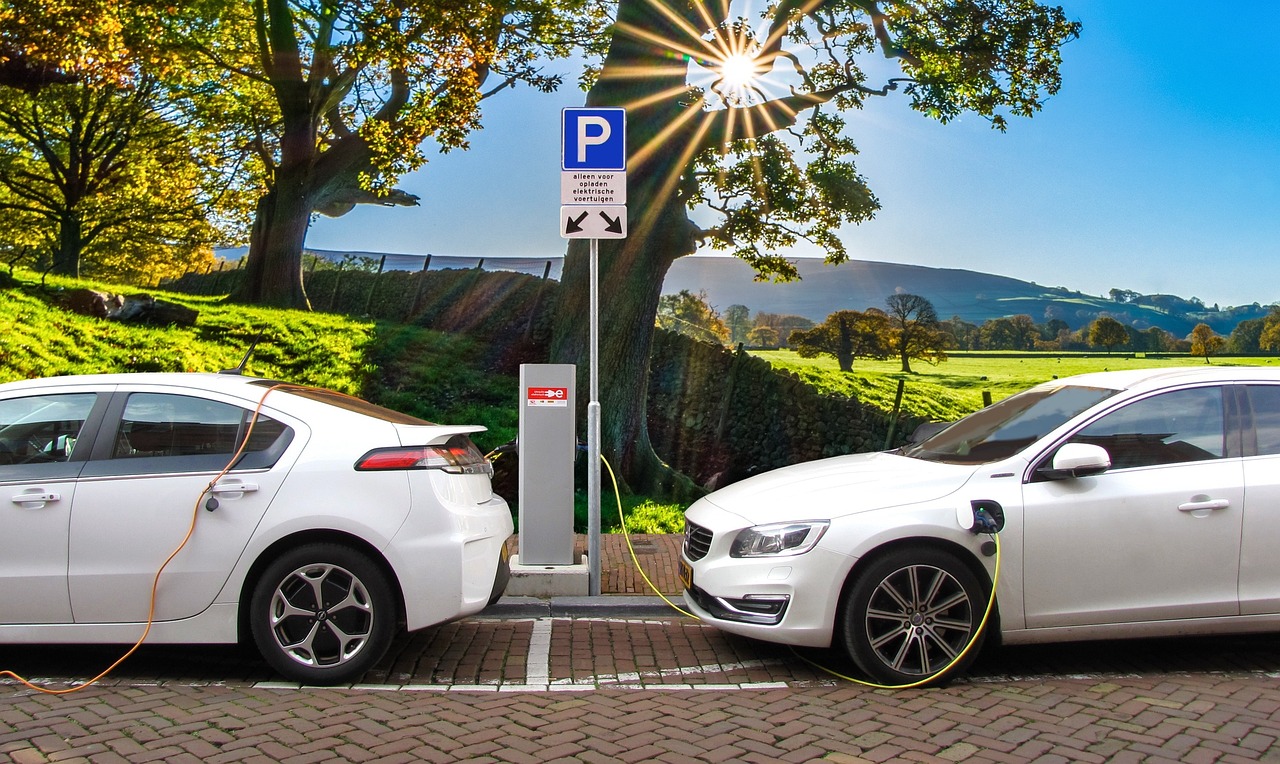
EVs charging on a sunny day. Image by (Joenomias) Menno de Jong on Pixabay
July 5, 2024. It’s a date that, well, most Americans probably paid little attention to. Whether they marked it or not, however, it’s a date that may have a sizable impact on their finances. It’s the day new rules went into effect in the US Treasury regulations to make financial incentives stronger for buying electric vehicles (EVs).
How? By means of tax credits.
The Inflation Reduction Act
Signed into law by President Biden just over two years ago, the Inflation Reduction Act (IRA) is “the largest investment in clean energy and climate action” ever undertaken by the US government.
Although there were many provisions of the Act intended to benefit the environment, not all were meant to assist Americans financially. Many were, however, including provisions regarding tax credits for the owners of EVs and solar panels. Now the law has been revised, including some of those provisions, and taxpayers want to know how their EV can save them money on their taxes.
New EVs
Drivers of qualifying new plugin EVs have been eligible for tax credits since the Energy Improvement and Extension Act of 2008 became law. Now there are new eligibility requirements to determine which vehicles qualify for the credits.
Before the IRA was revised, the amount of the tax credit for new EVs was calculated based on the capacity of their battery as follows:
- The base amount of the credit started at $2,500
$417 was then added if the vehicle’s battery capacity was at least five kilowatt hours
Another $417 was added on top of that amount for every kilowatt hour above five until the maximum amount for the credit–$7,500–was reached.
Under the revised law, while the maximum amount has not changed, the way that amount is calculated has, and the new calculations are all about location, location, location.
- If the vehicle meets requirements related to certain minerals in its battery, it qualifies for $3,750
- If the vehicle meets requirements related to the certain components of its battery, it qualifies for $3,750
- $7,500 is still the maximum amount available for the new EV tax credit

North America. Photo by Lara Jameson on Pexels.
But what do these requirements have to do with location?
- A certain percentage of the value of the minerals in the battery must have been either 1) extracted or processed in the US or in a country with which the US currently has a free trade agreement, or 2) recycled in North America. The specific percentage of minerals required for the credit depends on when the vehicle began being used.
- A certain percentage of the value of the battery’s components must have been either manufactured or assembled in North America. The specific percentage of components required for the credit depends on when the vehicle began being used.
There are also additional requirements that must be met:
- The vehicle must have had its final assembly in North America
- The taxpayer’s modified adjusted gross income (MAGI) must not exceed a certain amount ($300,000 for a joint return or surviving spouse; $225,000 for a head of household; and $110,000 for any other taxpayer)
- Only one credit may be claimed per VIN. Once it’s applied to a given VIN, it can’t be applied to that VIN again, even if the vehicle changes ownership. The VIN must be included on the taxpayer’s tax return for the year the credit is claimed.
- The vehicle’s Manufacturer’s Suggested Retail Price (MSRP) must not exceed a certain amount ($80,000 for a van; $80,000 for an SUV; $80,000 for a pickup truck; and $55,000 for any other vehicle)
The taxpayer may–but is not required to–transfer the credit to another entity, such as a dealer. This is one way of claiming the credit, and it can reduce the sale price of the vehicle at time of purchase. The other, more direct way of claiming the credit is to file Form 8936, Clean Vehicle Credit.
Used EVs
If you bought or are thinking of buying a used EV, you may also qualify for a tax credit, though the amount of the credit will be smaller. Here’s what you need to know:
- The sale price of the vehicle must be $25,000 or less–used EVs priced higher than that amount do not qualify.
- The amount of the credit may be either 1) $4,000 or 2) 30% of the sale price–whichever amount is lower.
- The taxpayer’s modified adjusted gross income (MAGI) for this tax year or the previous tax year must not exceed a certain amount ($150,000 for a joint return or surviving spouse; $112,500 for a head of household; and $75,000 for any other taxpayer)
- If the vehicle was bought and sold more than once after August 16, 2022 (the date on which the IRA was signed into law), it does not qualify for a tax credit by the time you purchase it. Your purchase of the vehicle after that date must be the first time it has been bought by anyone other than the original owner.
- You must be buying the vehicle for your personal use, not to re-sell it.
- You can only get the tax credit one time every three years. If you buy the vehicle and get the credit for it, then sell it to someone else and buy another before three years have passed, you will not qualify for the credit for the subsequent vehicle.
- You cannot be a dependent listed on anyone else’s tax return
- As with new vehicles, the VIN for the used EV must be included on the taxpayer’s tax return for the year the credit is claimed.

Car for sale. Image by Mohamed Hassan from Pixabay.
The Seller’s Report
Sellers are required to provide a time-of-sale report to the IRS known as a Clean Vehicle Seller Report (Form 15400) to confirm that the vehicle being sold is eligible for the credit. They also have to provide the buyer with a copy of the accepted report within three calendar days, but you can request it before you leave with the vehicle. If the EV began to be used on or after January 1, 2024, the seller has to submit this report through the IRS Energy Credits Online (ECO) portal, which should almost always let the seller know whether the IRS has accepted or rejected the report. Once you receive it, keep it in a safe place.
Check Yourself
Want to check your vehicle’s eligibility yourself? You can do so at fueleconomy.gov. You can also review IRS Publication 5866, The New Clean Vehicle Tax Credit Checklist for new vehicles or this IRS list of manufacturers and models for used vehicles.
More Info
Want to drill down into details? Check out the IRS Clean Vehicle Tax Credits page to learn more.










Leave A Comment